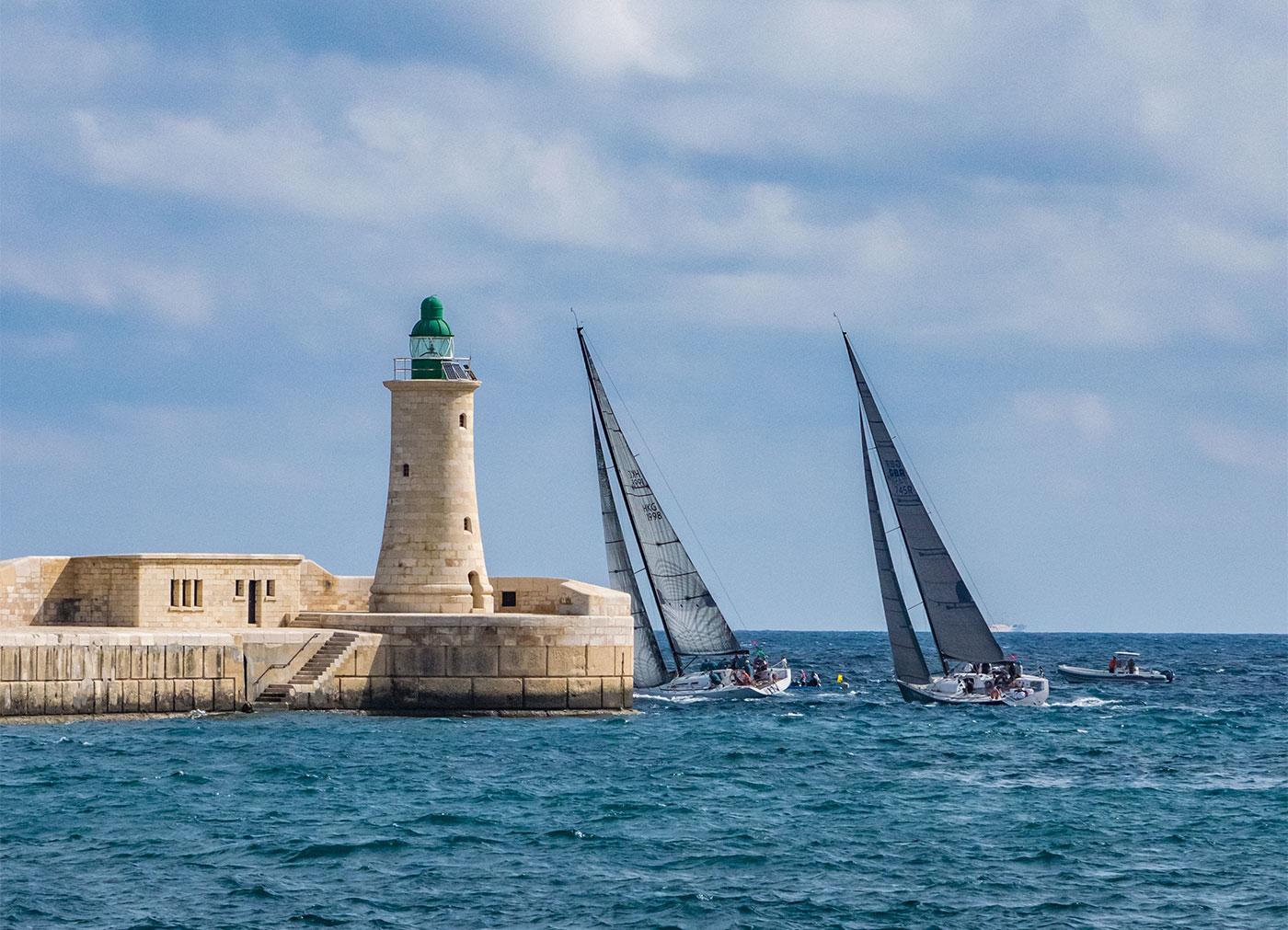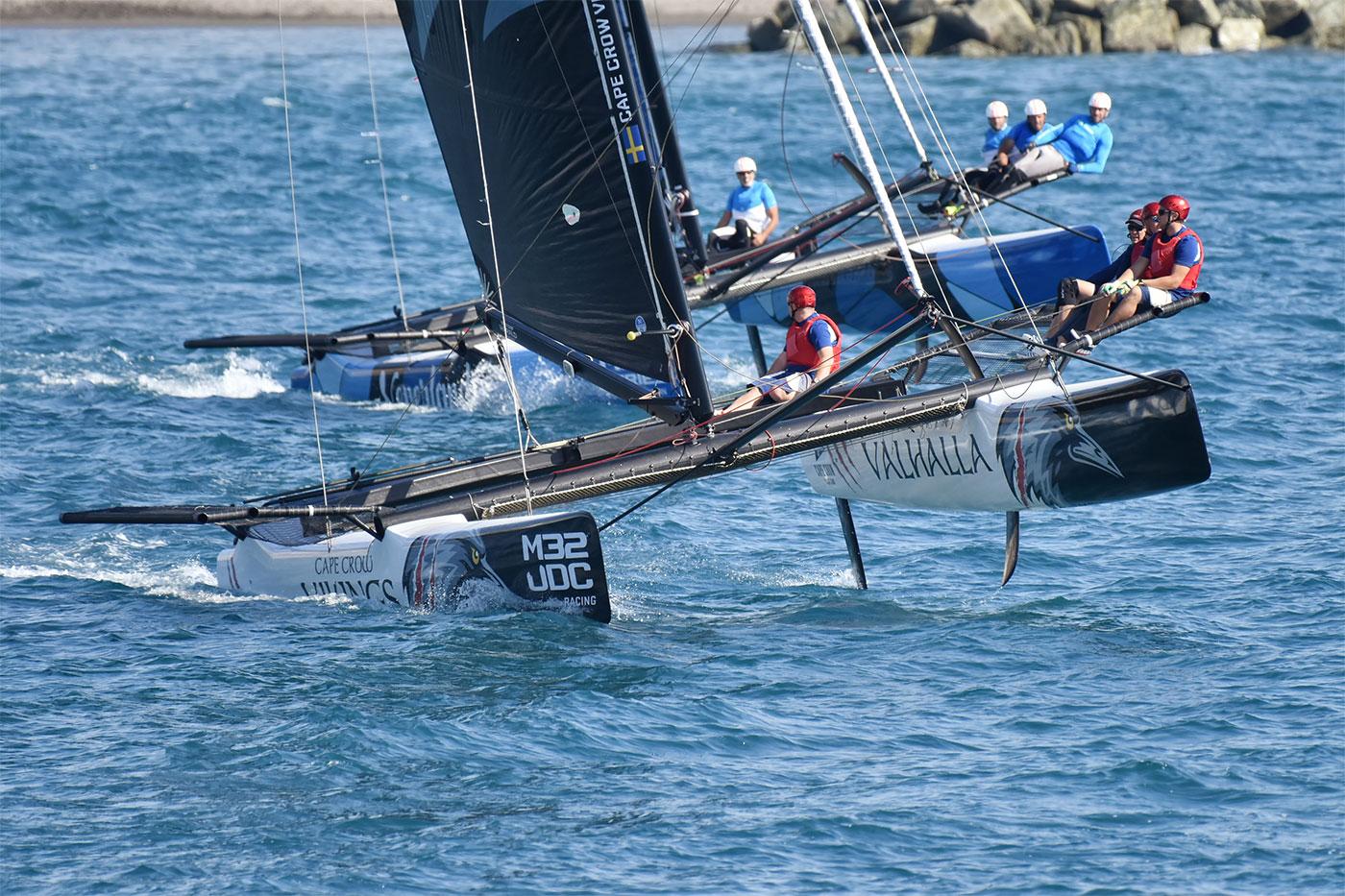

In the previous article we spoke about the types of professional regattas that are out there. We learned that every association holds competitions among same-class yachts. However, there are also private regattas where the yachtsmen can command their own yacht or a charter one. To level the playing field for different vessels, the organizers use rating systems. Let us look into that.
During a year, federations of yacht/centerboard/catamaran classes hold their own races — national, regional and world championships events. The key rule for those is adhering to a single standard – the hull, sails and rigging should be the same. Yet, the same crews can compete in professional-amateur regattas, too. In this case, they are divided into separate groups (divisions) and have their results scored according to the class rules.
Scoring the results of the teams performing on different vessels, i.e. having different potential for winning, is a far more difficult task. To find out the real possibilities of a yacht as compared to racers, a special mathematic formula is used which calculates the racing score (rating). After a race, these individual score points are multiplied by the team’s results, and the team with the shortest recalculated time wins. Such a scoring system is called a rating system.
The rules of time recalculation depending on a yacht rating are called the handicap system. Any measurement and rating system is directly connected with the yacht’s technical characteristics, i.e. its handicap.
To take part in a regatta, a yacht should obtain the rating system certificate. Among the most applicable ones are the following certificates:
Virtually all the large-scale world events combine different
divisions (a division unites vessels racing on the same distance). Any
of those events may use their own rating.
The Offshore Racing Congress (ORC)
establishes and maintains uniform rating standards in the sailing
sport. In 1969 it presented two certificates — ORC International and
ORC Club – to unite the two then-dominant standards — CCA (Cruising
Club of America) for North and South Americas and RORC (Royal Ocean
Racing Club for European countries).
The ORC International and
the ORC Club are similar certificates. The difference between them is
that an official measurer performs measurement for the former one,
while in the case of the ORC Club, the boat owner can submit some of
the details, unless there is a possibility to conduct the full
measurement in one’s own region.
To assess boats with different
characteristics, the ORC system uses:
The measurement is performed onshore, hence the boat should be fixed
in place as much as possible, with the centerboard (if any) raised and
the rigging raked. The features to be measured are the hull in all its
dimensions, the helm/rudder, the centerboard/keel, the internal
ballast, accumulator batteries, fixed and/or permanent/immovable
interior details, hatch covers and floorboards, permanent mechanisms,
electric equipment and vessel systems, the outboard motor, the mast,
the boom, the spinnaker boom and/or the bowsprit, the standing and
running rigging.
As a result, you get a boat measurement file,
with the ORC certificate
containing the current yacht characteristics. If you have altered any
parts of the vessel, a new measurement is required.

There are two ways to present the measurement results:
ORC is the sole reputable body recognized by World Sailing to
regulate racing rules for any events using the IMS system.
To
take part in an ORC regatta or division, every competitor should have
a certificate from an official measurer. Today, it may be obtained in 45 countries of the
world. You can fill
out an application on the ORC website to have your boat measured
in the One Design or an ORC group, as well as to make yourself
familiar with the current
set of rules and the
rating for other boats in the ORC Sailor Services online
catalog.
The certificate gives one the opportunity to compete
in the sailing events:

Rolex Middle Sea Race
The ORC breaks down the yachts into subgroups (ORC 0, ORC 1, ORC 2). Sometimes several subgroups may compete individually in regattas. One ORC subgroup includes yachts with similar handicap. The regatta’s organizing committee sets the participant rules itself. For instance, to take part in an ORC-division at Copa del Rey, you should comply with the following requirement:
Boats with LOA (Lengh Overall) ≥ to 9.30 m., with GPH
(General Purpose Handicap) between 505 sec./mile and 660 sec./mile.
Under
the criteria of the Organizing Committee, and according to the
number of entries, this group may be divided in three classes with
the following cuts:
ORC 1: GPH between 505 and
< 575 sec./mile.
ORC 2: GPH between 575 and
< 605 sec./mile.
ORC 3: GPH between 605 and
< = 660 sec./mile.
Thus, the ORC system allows to
identify the technical parameters for each yacht and find the common
denominator with the other competitors. After a race, the crew’s
elapsed time is multiplied by the coefficient from the measurement
table. The yacht with the least score is the winner.
Another leading rating system is the
International Rating System (IRC). It now issues certificates in
over 60
countries of the world. The owners and curators in the UK and
France are the Royal Ocean Racing Club (RORC) and l’Union Nationale de
la Course au Large (UNCL) respectively.
The distinct feature of
this rating is that the organization does not set particular rules so
that yacht designers could not adjust the characteristics accordingly.
With that said, the measurement may be performed in the authorized IRC
centres only.
An indicator is calculated for each boat, based
on which the resulting time in a race is corrected — TCC (Time
Corrector). To that end, the boat’s measurements, such as its length,
weight, draft, sail area and other characteristics are used. The
higher the TCC is, the higher the potential boat speed is.
After
the race, the boat’s elapsed time is multiplied by a coefficient. The
crew with the least final corrected time is the winner.
The IRC Certificate allows one to take part in the competitions:
Each organizer is entitled to set their own rules for IRC divisions
competitors. For example, the Copa del Rey Notice of Race also has
separate rules for the IRC division:
Boats with a
valid 2018 IRC endorsed certificate, shall comply the following
requirements:
a) Boats with TCC ≥1.240
b) HF
(Hull Factor): ≥ 8,5c) Dlr (Displacement-length ratio) : ≤185
Under
the criteria of the Organizing Committee and according to the number
of entries, this group may be divided in two classes with an
approximate cut at TCC 1.420.
This means that if
more applications with different TCC are submitted, the entire group
will be divided into two subgroups with the second of them including
yachts with TCC higher than 1.420 as per the IRC certificate.
Another
example is the Rolex Fastnet Race. The regatta uses several ratings:
IRC, ORC Club and MOCRA. On the regatta’s website you can separately
download IRC
rules, along with the regatta’s Notice of Race.
| Class | TCC range |
| IRC Zero | 1.275 and greater |
| IRC One | 1.101 – 1.274 |
| IRC Two | 1.051 – 1.100 |
| IRC Three | 1.004 – 1.050 |
| IRC Four | 0.850 – 1.003 |
The table shows the rules of group division based on TCC.
The
popular British regatta J.P.M. Round the Island Race includes four IRC
groups, with each of them being broken down into several more with
alphabetical designations. Also, there are many IRC-group participants
in the following regattas:
— Rolex Giraglia Cup
— Les Voiles de
Saint-Tropez
— Rolex Middle Sea Race
— Rorc Carribean 600 and
others
The
Multihull Offshore Cruising & Racing Association (MOCRA) has
been specifically created for multihull vessels. It allows to correct
the time for catamarans and trimarans of various forms and sizes.
Among the regattas using this rating are RORC Fastnet Race, Cowes
Week, Plymouth Regatta, JPM Round the Island Race and RORC Carribean
600.
This rating is most common for the regattas of the UK,
MOCRA’s home country.
The certificate includes the following
information:
measurement based on SI (International System Units)
system or any other international certificate;
coefficient
calculation of TCF (Time Correction Factor).
For instance, in
the above mentioned Fastnet Race the following characteristics are
mentioned for the MOCRA division:
| Class | TCF range |
| Multihull (MOCRA) | 1.100 and greater |

Multihull competition;
Another example is the J.P.M. Round the Island Race which is also
held in the UK. The regatta includes divisions which are assessed
according to several ratings (IRC, ISCRS, MOCRA). In 2019 two
Multihull Gran Prix and MOCRA divisions were announced with 14
applications in each of them
— up to 9,15 metres long;
— from
9,15 metres and higher.
The final results table always includes
open information about every participant and the time, so that anyone
who so wishes could recalculate the results using the formula:
—
vessel name;
— its series number;
— coefficient (TCF);
—
finish time;
— elapsed time;
— corrected time;
— final
standing as of end of the day or regatta.